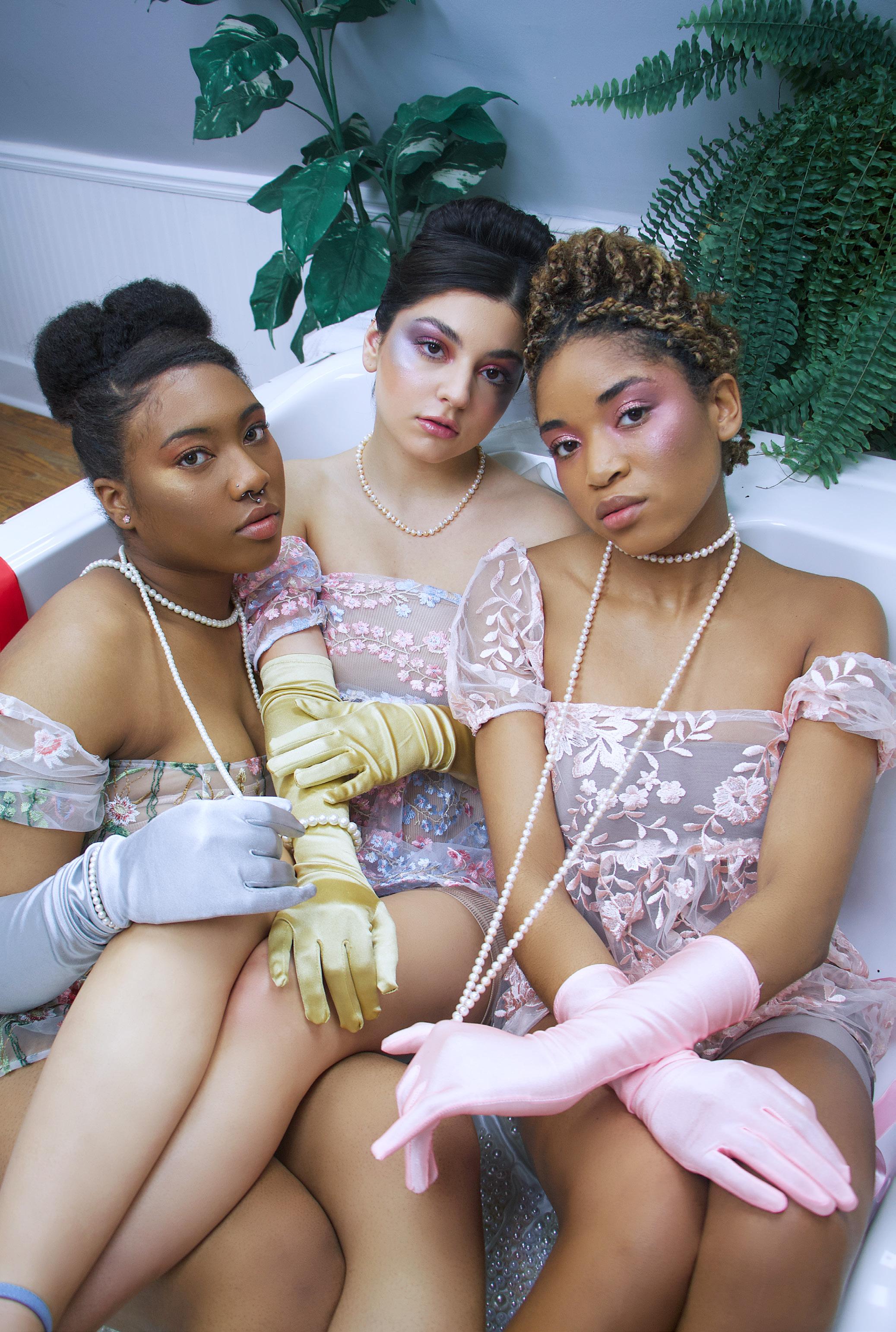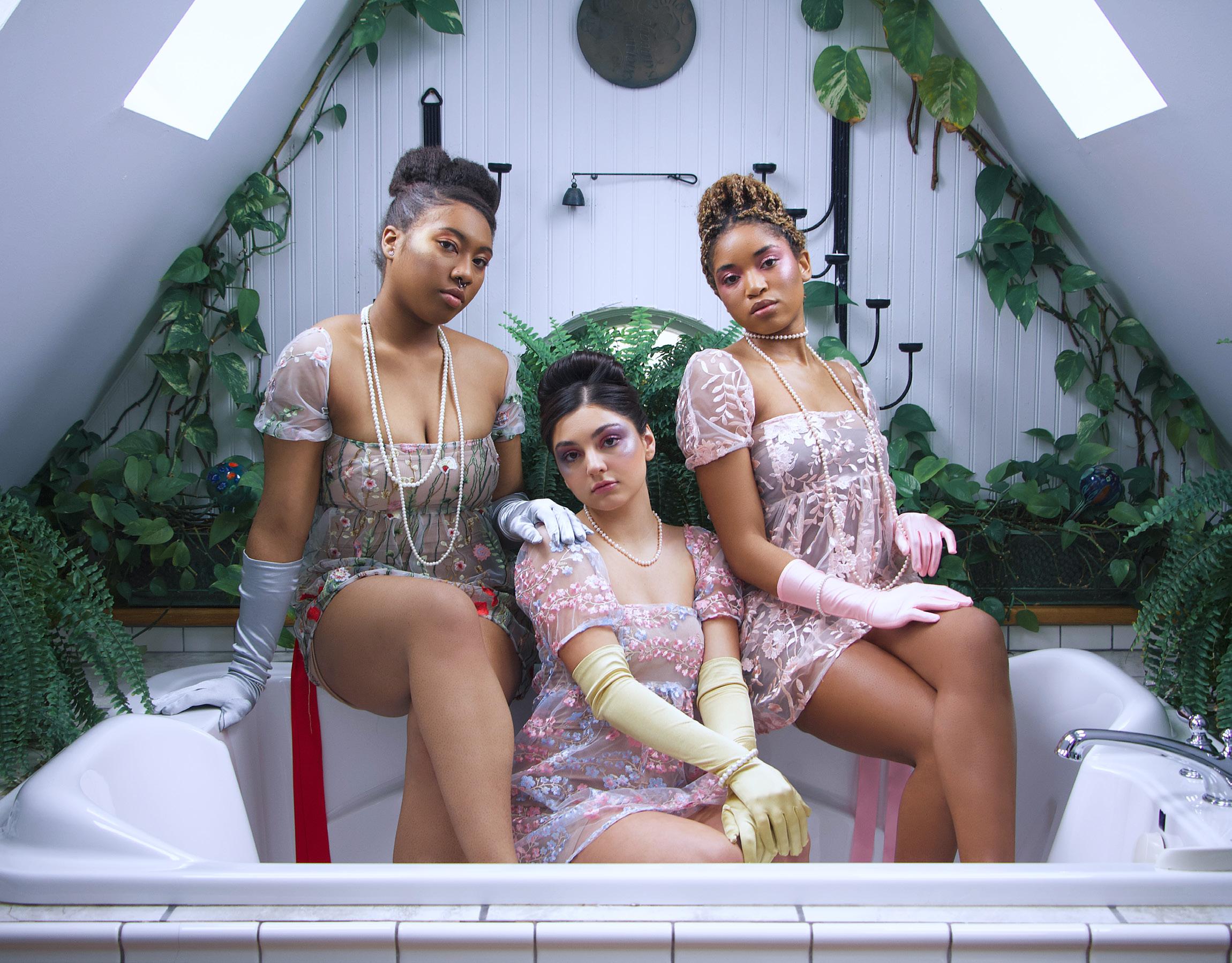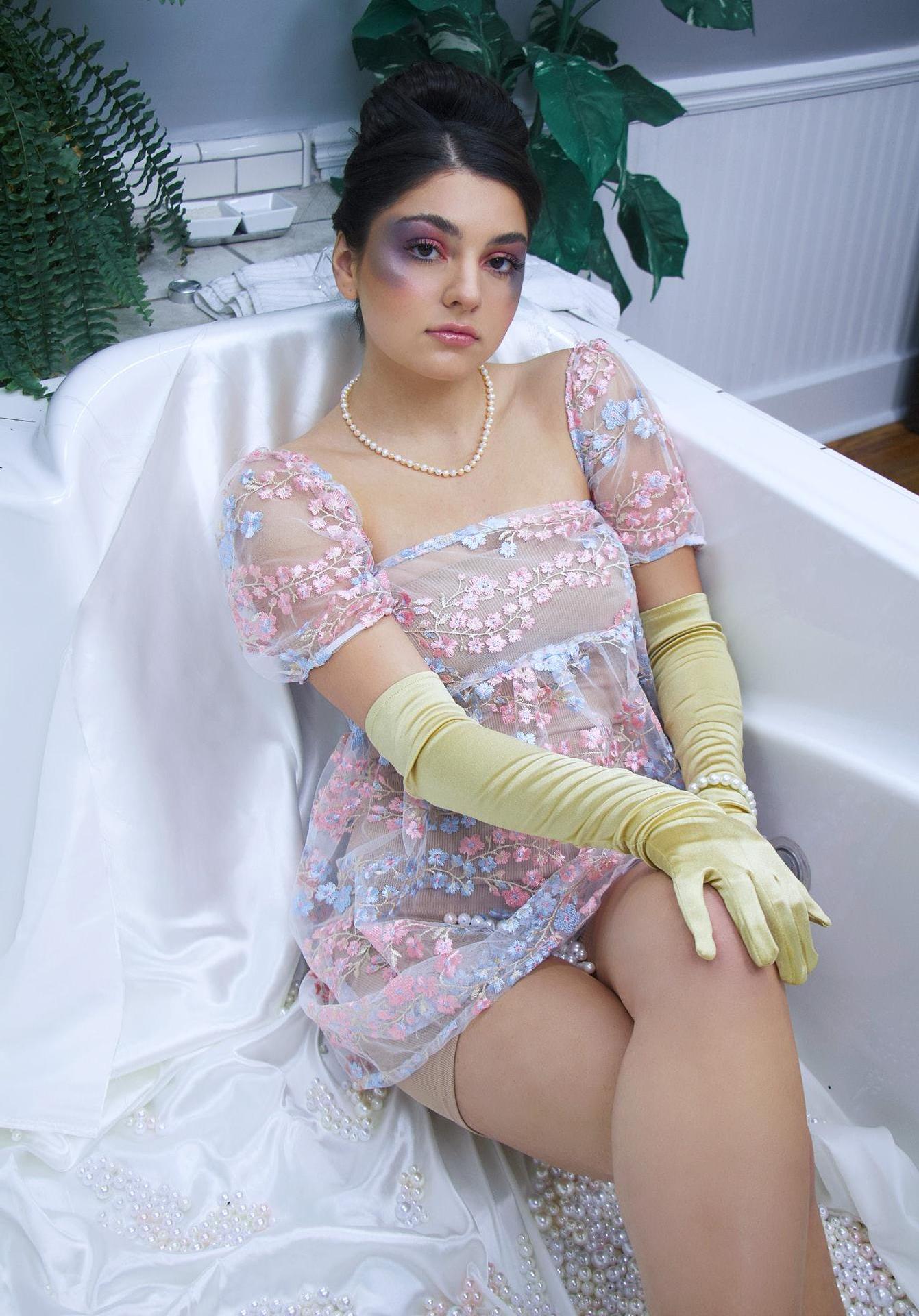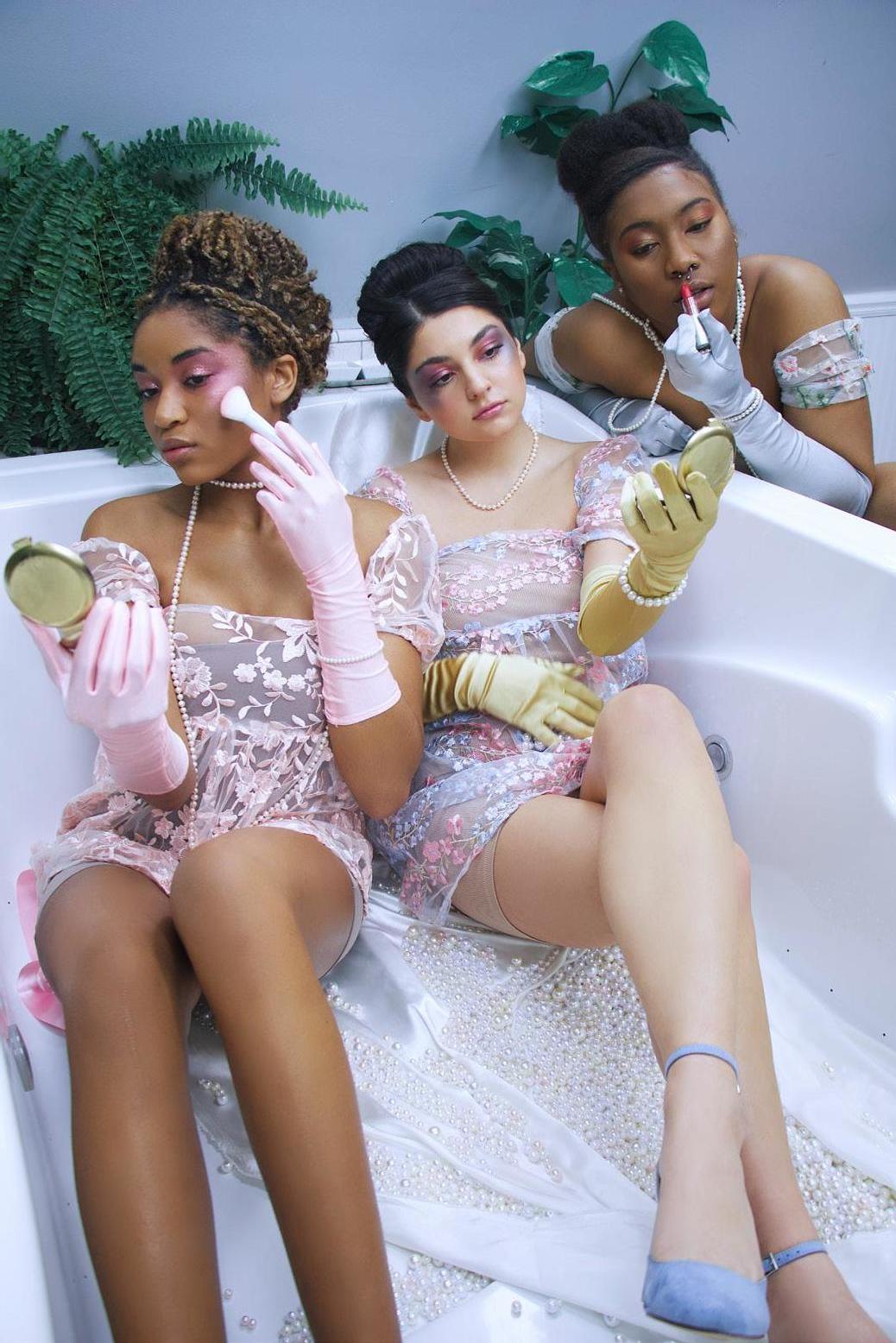
3 minute read
DROWNING IN PEARLS
DROWNINGIN PEARLS

Advertisement
When walking through an art museum, one might notice that the pieces feature women with more natural faces and bodies than those in any modern magazine. For some, this might be a fleeting idea, but for others, it is a reminder of the insecurities collected from internalizing contemporary beauty standards while growing up. As a society, we neglect to realize that the women we see shaped out of stone or painted on canvas are the most innately beautiful. We look at marble sculptures of women and decide that they have value we cannot see in ourselves, despite our similarities.
Sandro Botticelli’s masterpiece “The Birth of Venus” depicts the Greek goddess of love and beauty in all her authenticity. She stands in place of a pearl on a scallop shell, her soft, rounded belly and thighs viewed as the epitome of 15th century beauty. Apart from Botticelli’s epochal painting, there are countless examples of natural women in art with small lips, modest chests or shapely curves. What was ultimately prioritized as attractive then, above all else, was health.
Presently, what society regards as beautiful is neither physically nor mentally the image of health at all. Modern women are instead drowning in impossible beauty standards that are perpetually evolving, creating cycles of insecurities that often provoke destructive behaviors. Many women eventually become so far removed from accepting themselves as they are that they resort to permanently changing themselves instead. The competitive nature between women only sustains this behavior. Often, women find themselves comparing their faces and bodies to the likes of women on social media. In turn, they feel inadequate for looking little to nothing like these women, whose images are often digitally altered or edited until they are far from realistic.
Men are not immune to beauty standards either. They may suffer silently for years while the conversation stays solely on women and their struggles. While women are more expected to undergo changes to their appearance, men who take

it upon themselves to change their appearance for aesthetic reasons are seen as more feminine and therefore less of a “man.” Men and women are both predisposed to desire to be more conventionally attractive than other men and women, but women are more likely to be praised for making changes to their body in order to fit a societal norm. Regardless of gender, it is important everyone feels comfortable and accepted in their body.
Society must evolve to prioritize health over appearances. Nurturing a healthy relationship between your body and mind is easier said than done, and although it tends to start from a developmental age, it remains important throughout the entirety of one’s life.
What if, by accepting yourself, you could influence others to accept themselves as well? Would your insecurities be lessened if you found someone to look up to? If so, perhaps you can decide to be that someone instead. Imagine, as a parent, passing down the structure of your nose, the curves of your hips or your strong arms to your child. Imagine your child loving themselves because they grew up with a parent who loved and respected themself enough to not allow their child to drown in superficialities. By accepting ourselves in our entirety, we teach those who are less accepting to love themselves instead. By loving the features we may be insecure about, we can show those who have the same features to love themselves too, creating a wake for future generations to follow.
STYLE: LIA MASSEY WORDS: KSENIYA LUKIY PHOTO: KARINA NOELLE STANKOWSKI GLAM: MACKENZIE STOY & SABRINA SCHOONMAKER LOCATION: WILD GOOSE INN












